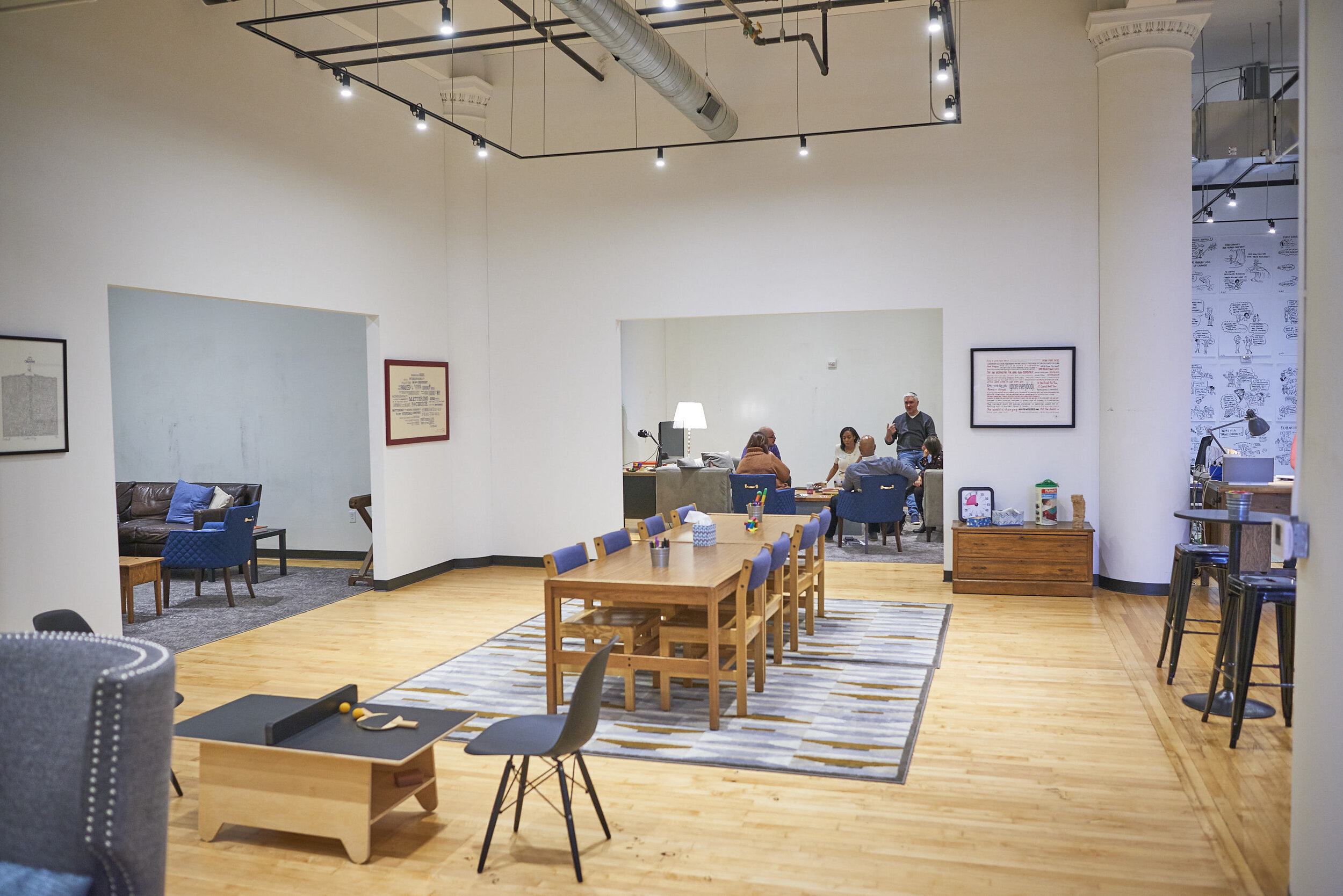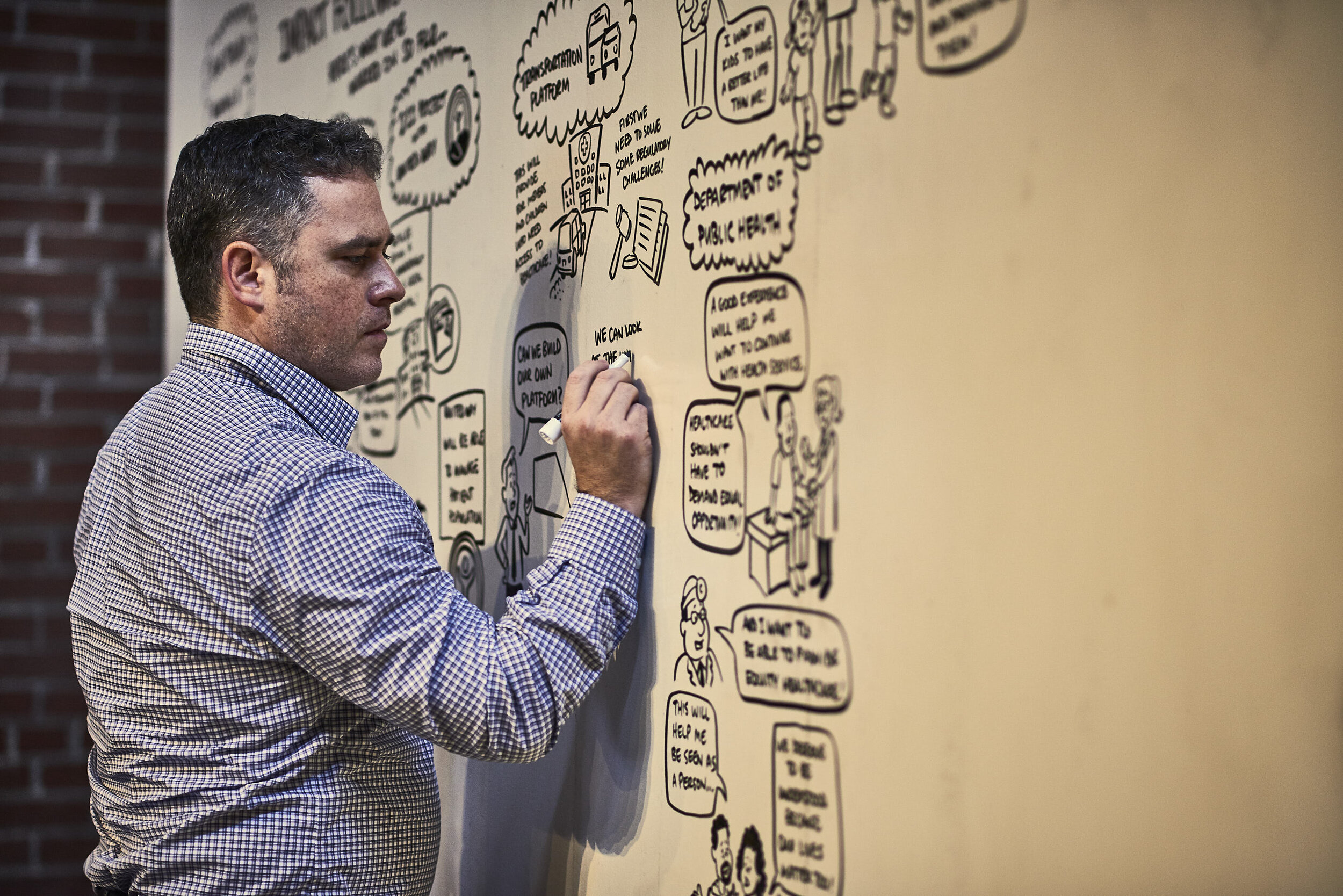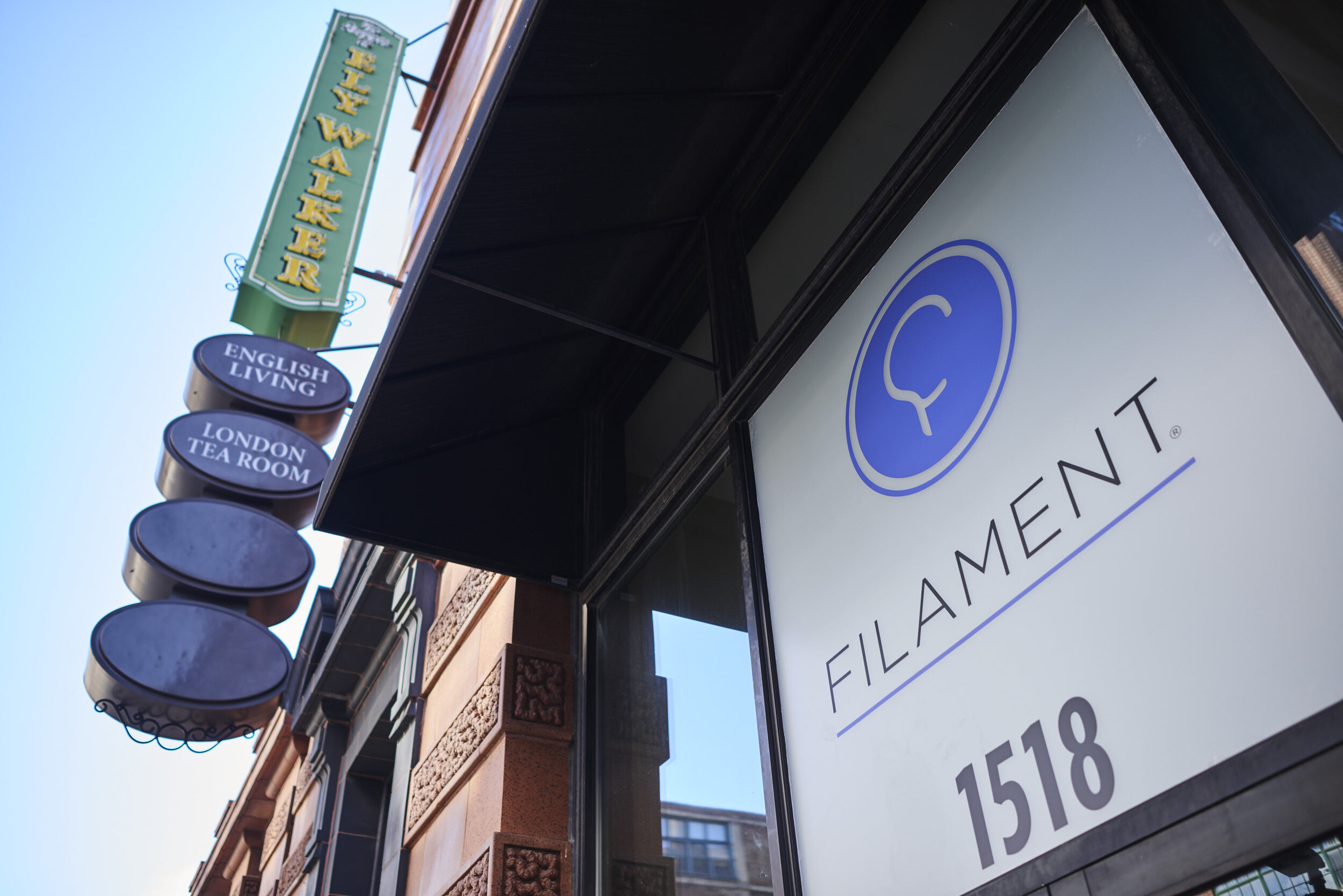Late-Night Conversation Sparks Frustrated Lawyer’s Bright Idea
Trained as a lawyer, Matt Homann’s entrepreneurial drive and need to innovate left him frustrated with the legal industry's stagnant business model. When he realized his unique approach to problem-solving could apply to a variety of industries, he started Filament, LLC, which works with clients to design, facilitate and host in-person meetings that help people think and solve problems.
Raised in southern Illinois, Homann had always envisioned a legal career. He majored in political science at the University of Illinois and earned a law degree from Washington University in St. Louis, yet felt surprisingly unprepared to practice law. “We were taught to think like lawyers, but not to work like them,” says Homann, noting that the disconnect between theory and practice seemed odd to him. “So few law professors have ever really practiced law, so I was ill-prepared for the reality of serving real clients with serious problems.”
And though legal work was novel and fun, the traditional law firm business model based on billing for time drove Homann crazy. “I hated tracking every six minutes of my day on my timesheet and being measured only on the time I spent, not the value I created for my clients,” he says. Lawyers profited from spending time billed to clients, but they didn’t prioritize creativity in their own businesses. “New ideas are scarce because ‘precedent’ is the first thing you learn in law school; many in the industry believe that everything we’d like to try in our businesses must be based upon something done by others before.”
Fed up with the status quo, Homann started his own firm and embraced a brand-new online medium: blogging. Writing about legal technology innovation and creativity in an early legal blog called ‘The Non-Billable Hour,’ Homann discovered a broader audience of accepting peers around the world. “The blog really gave me a voice that was disproportionate to my amount of experience in the profession,” Homann says. In the small, young community of legal bloggers, Homann crafted a standout voice. “Being asked to write and speak really validated my thoughts and my expertise as a young professional.”
The Lightbulb Moment
At an American Bar Association technology conference in Chicago in 2005, Homann found himself having a life-changing conversation about the future of law well into the night. Aiming to bring those ideas into the light, he created LexThink, which he describes as the first legal “unconference.” He expected 10 attendees at the first, informal event, but nearly 50 legal innovators from around the globe joined him to talk about possibilities of the future of law practice. “I got this immense amount of credit just to walk around this really cool room with people talking about things that were valuable to them,” Homann recalls.
Buoyed by this initial success, Homann created additional conferences, helping innovative lawyers find their peers and engage in unique and creative, and PowerPoint-free, ways. “As I built this community and facilitated our meetings, I realized I had a unique viewpoint and an opportunity to be a lot better at this then I was ever going to be as a lawyer.” Accepting requests to bring his talents to law firms and ultimately other industries, Homann permanently transitioned from law to business facilitation and consulting.
The following year, Homann created the Idea Market, which he coined “a semi-regular gathering of irregular people,” where a diverse group of St. Louisans could share their business challenges and connect with fellow innovators. He later consulted with Microsoft and spent two years with XPLANE, adding visual thinking processes to his toolkit as well as the power of engaging people around ideas.
Eager to transform his decade-long experience as a consultant and entrepreneur into a new business venture, Homann leased 20,000 square feet of office space in downtown St. Louis and launched Filament in 2015. The company provides unique facilitation and creative tools to help smart people think together better and solve problems in person. “We want people to be engaged and to use their time together for insight discovery instead of information delivery,” says Homann. His approach has proved successful across business and non-profit sectors for clients such as Nestle-Purina, Emerson, Wells-Fargo Advisors, HP and Travelers.
Homann’s mission revolves around creating collaborative cultures. PowerPoints are verboten and small group work is the norm. “We try to focus on keeping people engaged and working together in a way that doesn’t happen enough anymore,” says Homann. “Getting people in groups in a room to talk to each other shouldn’t feel innovative, but it feels new because generally today, work that is rewarded most happens alone.”
In the future, Homann plans to develop new tools and products to continue helping businesses and non-profits solve problems by improving communication and cooperation. He’s also taking his meeting model on the road through strategic partnerships across the U.S. In St. Louis, he’s building out Filament’s “Sprint Space,” where he envisions offering actionable strategies in compressed timeframes of between one and eight weeks.
“I hope that when a group wants to move forward in a new way, they think of Filament,” he says. “That’s why we’re here.”
[Homann is also the innovator behind Invisible Girlfriend.]









